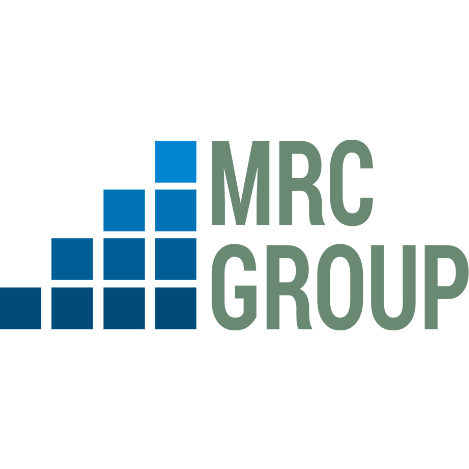









A microgrid is a small-scale electricity network connecting consumers to an electricity supply, that may function both as a controllable entity to the main power grid (on-grid mode) and independently of it (off-grid mode). When supporting a main power grid, microgrids provide backup power during periods of high demand, which helps to improve the grid’s resilience.
Microgrids help to enhance sustainability, energy efficiency, and quality of power systems. They further boost the potential for sustainable development of individual end-user sites by giving them grid independence.
Microgrids range from 100 kilowatts to over one megawatt, they are energy-efficient systems that use small-scale generators, energy storage, and control systems to manage energy flow. They can be powered by renewable energy sources like solar, wind, and fuel cells, or conventional generators, with energy storage systems like lithium-ion, lead-acid, and sodium-sulfur batteries crucial for reliable electricity supply.
Types of Microgrid
The three main types of microgrids are:
- Grid-Connected Microgrids: These microgrids, which connect to the electrical grid through a switching mechanism, provide grid services such as voltage regulation, extra capacity, demand response, and reliability. They are becoming increasingly common in universities, hospitals, and fire stations.
- Remote Microgrids: Also known as off-grid microgrids, these are systems that run in island mode because there isn't any central grid infrastructure close by. They offer 100 percent electricity stability and independence from the central grid for isolated and difficult-to-reach areas.
- Networked Microgrids: Networked microgrids are aggregates of several distributed energy resources (DERs) under a control system that is linked to a utility grid circuit segment. Smart cities and community microgrids employ this mechanism.
Benefits of Microgrids
The benefits of microgrids are discussed below:
- When supporting main grids, microgrids ensure electricity reliability, keeping the power flow stable, especially during periods of high demand. Energy sources such as solar, generators, battery storage systems, or other distributed energy sources for microgrids can be used to serve customers in cases of power outages or reduced grid capacity.
- Microgrids can also reduce the energy costs of consumers by ensuring the management of power supply given to the consumers which in turn will help reduce what they spend on buying energy. Also, in areas where electricity costs fluctuate and are high, an advanced microgrid can influence the effect of the fluctuations of energy prices on its customers by consistently providing energy at a lower cost.
- Microgrids can reduce gas emissions by using a wide range of green power production technologies, such as solar, wind, combined heat, and power (CHP) plants, and energy storage which will in turn promote clean energy and the environment.
Application of Microgrids
- Health care: The provision of dependable power is crucial for running critical health infrastructure, including surgical clinics, long-term care facilities, and hospitals. The environmental impact of healthcare institutions in terms of emissions reduction can be decreased by using microgrids to either partially or fully replace diesel backup generators.
- Community and residential areas: Microgrids serve as local energy sources for neighborhoods, cities, towns, and rural areas, ensuring reliable and sustainable electricity, and supporting critical community infrastructure like water treatment facilities.
- Military: Microgrids can serve as self-sufficient, independent, or mobile unit power systems that can operate on and off the battlefield to support and ensure the smoothness of military operations.
Challenges Affecting the Development of Microgrids
The development of microgrids may face several challenges, including:
- Voltage and Frequency Variations: Due to the intermittent nature of some renewable energy sources, such as solar and wind power, microgrids may have voltage and frequency fluctuations. The performance and reliability of the system may be impacted by these fluctuations.
- Power Management and Economic Operation Difficulties: Maintaining a microgrid's economical functioning and effective power management can be difficult as it involves maximizing the use of different distributed energy supplies, energy storage systems, and load control.
- Regulatory and Policy Challenges: In some parts of the world, the development of microgrids frequently encounters policy and regulatory obstacles. These barriers often result from a misalignment with the current energy market systems. As such additional guidelines, regulations, and policies may be required for the development of microgrids.
Case Study
An example of a microgrid project in Nigeria is the Hybrid Interconnected Mini-grid Power Plant project in Epe, Lagos State. The project, which is still being developed, has a capacity of 0.88 MW and is being led by A4&T Power Solutions Limited and Ikeja Electric, in collaboration with the Lagos State Government and the Rural Electrification Agency (REA). It is expected that the project will provide energy access for 12,500 people across five communities in the state.
Other examples of microgrid projects in Africa include projects implemented by PowerGen. This is a company whose microgrids serve over 100 connections within a radius of under one kilometer. This effort provides sustainable electricity access to over 50,000 individuals in remote communities across African countries where traditional grid connections are economically impracticable. Countries that have benefitted from these microgrids include Zambia, Somalia, Rwanda, Kenya, Tanzania, Mozambique, Uganda, Benin, and Niger.
Conclusion
Microgrids are a sustainable and efficient solution for enhancing energy reliability, sustainability, and efficiency in various sectors. They provide a reliable source of electricity, ensuring continuous power supply to critical facilities, and contribute to energy resilience and quick recovery from disruptions. Microgrids can lower energy costs for consumers and businesses through efficient energy management and the integration of renewable energy sources. The successful adoption of microgrids demonstrates the significant benefits of transitioning towards more resilient and sustainable energy systems. In general, microgrids help to improve livelihoods and promote economic growth.












